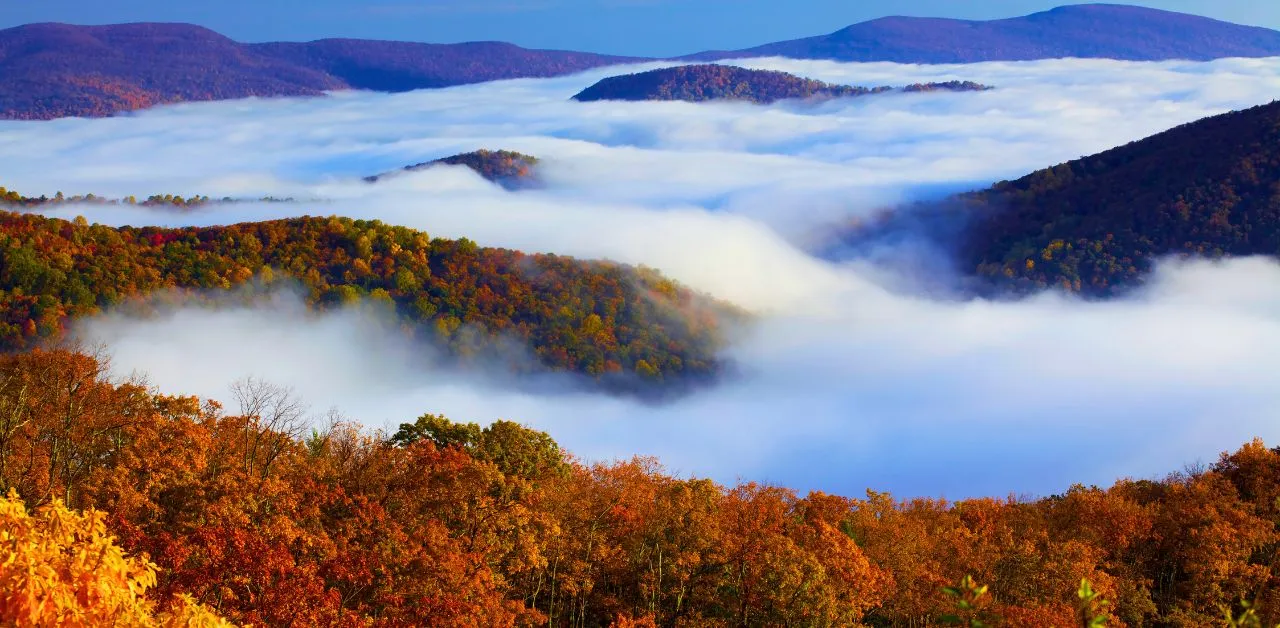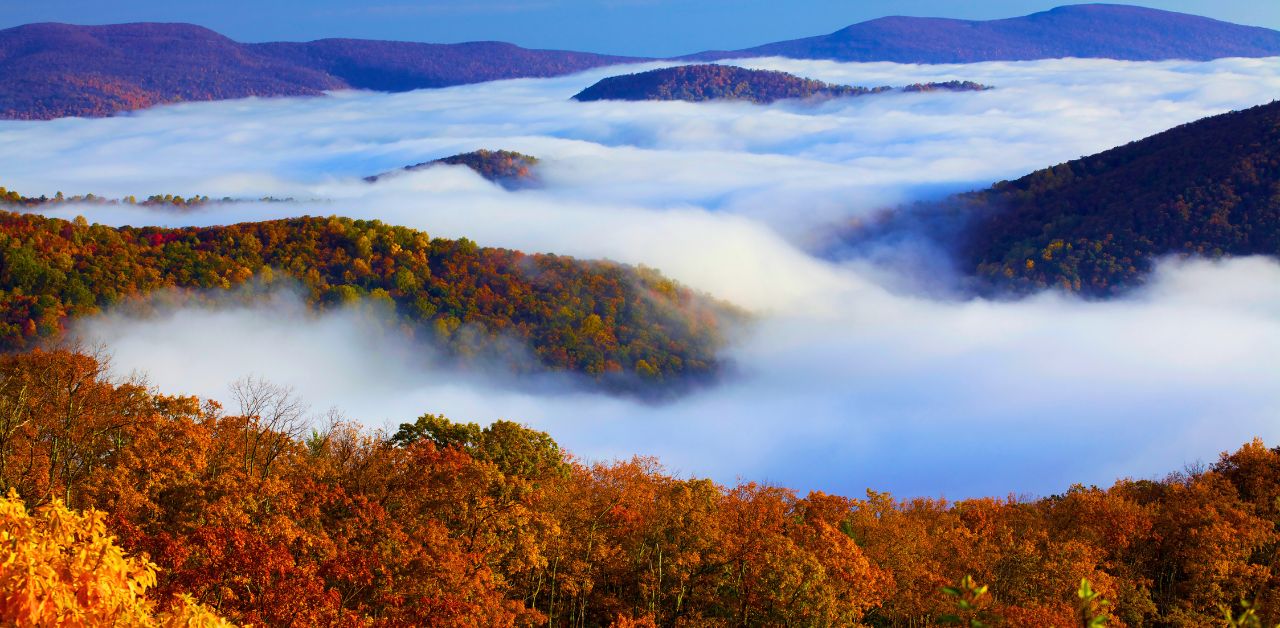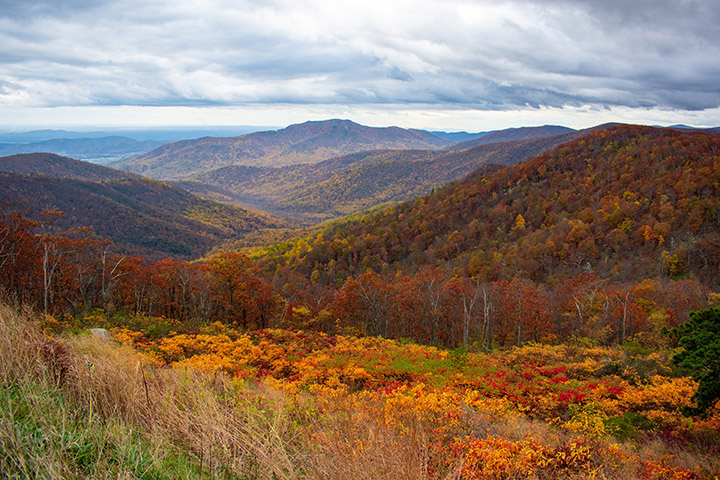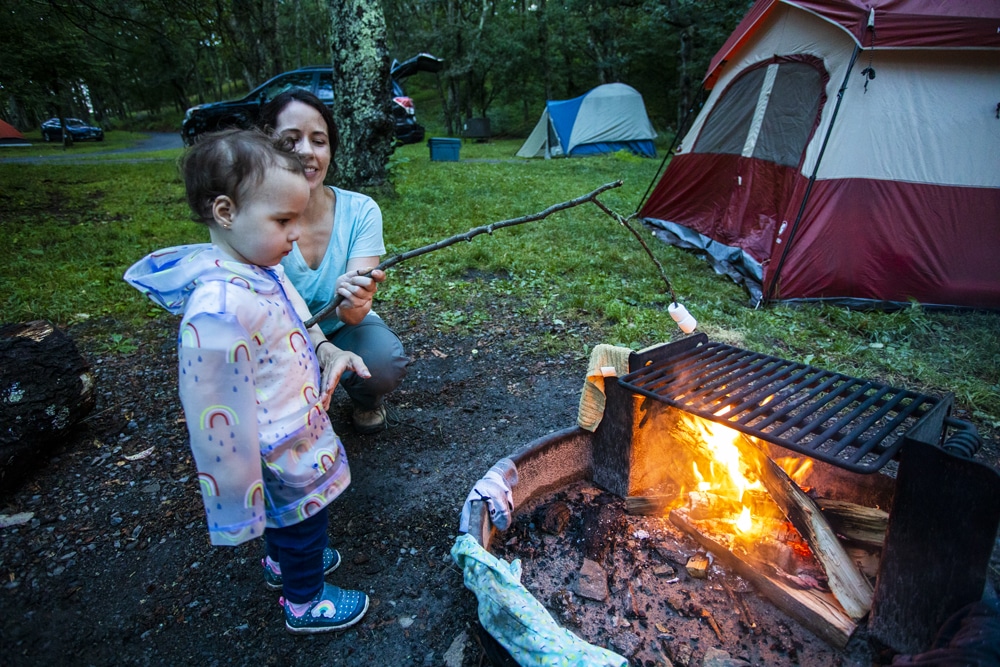
The Ultimate Shenandoah Autumn Camping Guide: Expert Tips for Fall Adventures
Planning Your Autumn Adventure in Shenandoah
 Timing is everything when it comes to implementing successful shenandoah camping tips for autumn. The fall season in Shenandoah National Park typically spans from late September through November, with peak foliage occurring during different weeks depending on elevation. I've learned through years of autumn camping that the sweet spot for combining optimal weather conditions with spectacular fall colors usually falls between mid-October and early November. The park's elevation ranges from 600 to over 4,000 feet, creating a cascade effect where fall colors begin at higher elevations and gradually work their way down. This phenomenon means you can potentially experience multiple "peak" periods during a single camping trip by strategically planning your locations and hiking routes. Shenandoah fall foliage peak timing varies annually, but understanding these patterns is crucial for planning.
Timing is everything when it comes to implementing successful shenandoah camping tips for autumn. The fall season in Shenandoah National Park typically spans from late September through November, with peak foliage occurring during different weeks depending on elevation. I've learned through years of autumn camping that the sweet spot for combining optimal weather conditions with spectacular fall colors usually falls between mid-October and early November. The park's elevation ranges from 600 to over 4,000 feet, creating a cascade effect where fall colors begin at higher elevations and gradually work their way down. This phenomenon means you can potentially experience multiple "peak" periods during a single camping trip by strategically planning your locations and hiking routes. Shenandoah fall foliage peak timing varies annually, but understanding these patterns is crucial for planning.
Reservation Strategy for Autumn Success
Campgrounds and lodges are typically fully booked for all weekends in September and October several months in advance. My strategy involves booking reservations as early as possible, typically six months ahead, while keeping backup plans for weekday adventures. First-come, first-served sites fill quickly, usually by Thursday evening during peak season.
Essential Gear for Fall Camping in Shenandoah
Three-Season Sleeping System
The foundation of comfortable autumn camping begins with a proper sleeping system rated for 20-30°F temperatures. After testing numerous options, I consistently recommend the oaskys 3-Season Camping Sleeping Bag for its versatility and warmth retention.
Check Price on Amazon - $25.99Amazon's Choice: 23,653+ reviews, 4.4/5 stars
Reliable Lighting Solutions
Autumn's shorter daylight hours make dependable lighting crucial. The Energizer Universal Plus LED Headlamp provides hands-free illumination that's essential for evening camp setup and early morning activities.
Check Price on Amazon - $8.40Amazon's Choice: 8,076+ reviews, 4.4/5 stars
 Four-season tent capabilities provide essential protection against autumn's unpredictable weather patterns. The BISINNA 4 Season Tent offers lightweight portability without compromising weather resistance. Its double-layer waterproof construction and aluminum alloy poles withstand the wind gusts common during fall storms in Shenandoah's exposed camping areas. Get BISINNA 4 Season Tent - $89.99 Solar-powered lighting solutions extend your camping capabilities while reducing battery dependency. The Kizen Solar Camping Lantern provides reliable illumination through rechargeable technology that harnesses autumn sunlight during the day. Its collapsible design saves precious pack space while delivering 360-degree lighting for evening activities around camp. Get Kizen Solar Lantern - $22.99
Four-season tent capabilities provide essential protection against autumn's unpredictable weather patterns. The BISINNA 4 Season Tent offers lightweight portability without compromising weather resistance. Its double-layer waterproof construction and aluminum alloy poles withstand the wind gusts common during fall storms in Shenandoah's exposed camping areas. Get BISINNA 4 Season Tent - $89.99 Solar-powered lighting solutions extend your camping capabilities while reducing battery dependency. The Kizen Solar Camping Lantern provides reliable illumination through rechargeable technology that harnesses autumn sunlight during the day. Its collapsible design saves precious pack space while delivering 360-degree lighting for evening activities around camp. Get Kizen Solar Lantern - $22.99
Layered Clothing System Strategy
Successful autumn camping relies heavily on proper layering techniques that adapt to Shenandoah's temperature fluctuations. Base layers should consist of moisture-wicking synthetic materials or merino wool that maintain warmth even when damp. Insulation layers provide warmth retention during rest periods, while outer shell layers protect against wind and precipitation. I've learned that cotton clothing becomes dangerous during autumn camping due to its moisture retention properties. When temperatures drop unexpectedly, wet cotton can lead to hypothermia situations. Instead, focus on synthetic materials and wool blends that maintain insulating properties even when wet from morning dew or unexpected rain showers.Best Campgrounds for Autumn Stays
Mathews Arm Campground represents my top choice for autumn camping in Shenandoah's northern district. Located at mile 22.2 on Skyline Drive, this campground offers 178 sites nestled among mature hardwood forests that create spectacular fall color displays. The elevation of 2,800 feet provides optimal foliage viewing while maintaining comfortable temperatures during October and November. The campground's proximity to Mathews Arm Trail and Heiskell Hollow Trail creates immediate access to stunning waterfall hikes surrounded by autumn colors. I particularly appreciate the campground's layout, which provides natural privacy barriers between sites using the existing forest canopy. Sites 101-120 offer the most secluded experience, while sites near the camp store provide convenient access to supplies and restroom facilities.Big Meadows Campground: The Crown Jewel
Big Meadows Campground, situated at mile 51.2, offers the park's most iconic autumn camping experience. The nearby Big Meadows area transforms into a golden grassland surrounded by crimson and orange forest canopies. This campground provides 221 sites with amenities including hot showers, a camp store, and restaurant facilities.
Lewis Mountain Campground: Hidden Gem
Lewis Mountain Campground provides an intimate camping experience with only 31 sites, making it perfect for campers seeking tranquility during peak autumn visitation periods. Located at mile 57.5, this smaller campground offers a more rustic experience while maintaining basic amenities. The surrounding forest creates a cathedral-like canopy that filters autumn sunlight into golden beams throughout the camping area. The campground's proximity to Lewis Falls Trail provides easy access to one of Shenandoah's most photogenic waterfalls surrounded by fall foliage. I've found this location particularly rewarding for photography enthusiasts seeking to capture the essence of photography spots in Shenandoah during fall. Outside the park boundaries, numerous private campgrounds offer alternative options when park campgrounds reach capacity. Shenandoah River State Park, located 20 minutes from the park's northern entrance, provides modern camping facilities with river access and hiking trails that showcase autumn colors along the Shenandoah River valley.Weather Preparation and Seasonal Challenges
Autumn weather patterns in Shenandoah create unique challenges that require specialized preparation strategies. Temperature variations of 40-50 degrees between nighttime lows and daytime highs demand flexible gear selections and clothing systems. I've experienced October nights dropping to 25°F followed by afternoon temperatures reaching 75°F, creating condensation management challenges inside tents and sleeping systems. Precipitation patterns during autumn months typically involve brief, intense thunderstorms followed by clear, cool conditions. These weather systems can arrive quickly, transforming sunny hiking conditions into dangerous situations within minutes. My emergency shelter protocols include identifying immediate shelter options along planned hiking routes and carrying lightweight emergency bivouac equipment.Critical Weather Considerations
- Frost Formation: Clear autumn nights often produce heavy frost that can freeze water supplies and create slippery trail conditions
- Wind Exposure: Skyline Drive's ridgeline location exposes campsites to strong wind gusts during weather system passages
- Rapid Temperature Drops: Cold fronts can cause 20-30°F temperature drops within 2-3 hours
- Visibility Changes: Morning fog and low clouds can reduce visibility to less than 50 feet on ridgeline areas
My Experience: Lessons from Years of Fall Camping
 Over fifteen years of autumn camping in Shenandoah has taught me invaluable lessons that can't be learned from guidebooks alone. My first October camping trip in 2008 nearly ended in disaster when an unexpected early season snowstorm caught me completely unprepared with summer gear. That experience taught me the critical importance of preparing for worst-case weather scenarios rather than hoping for best-case conditions. My most memorable autumn camping experience occurred during a solo backpacking trip to Shenandoah National Park in fall 2019. I had planned a three-day trek along the Appalachian Trail section within the park, timing my visit for peak foliage in mid-October. The first day delivered perfect conditions with clear skies and temperatures in the comfortable 60s. However, the second night brought an unexpected weather system that dropped temperatures to 18°F with sustained winds of 25-30 mph. My three-season tent, which had served me well during previous autumn trips, struggled against the wind loads. I learned the hard way that guy-line adjustments and proper tent staking techniques become critical during extreme weather events. The experience taught me to always carry additional tent stakes and paracord for emergency guy-line repairs.
Over fifteen years of autumn camping in Shenandoah has taught me invaluable lessons that can't be learned from guidebooks alone. My first October camping trip in 2008 nearly ended in disaster when an unexpected early season snowstorm caught me completely unprepared with summer gear. That experience taught me the critical importance of preparing for worst-case weather scenarios rather than hoping for best-case conditions. My most memorable autumn camping experience occurred during a solo backpacking trip to Shenandoah National Park in fall 2019. I had planned a three-day trek along the Appalachian Trail section within the park, timing my visit for peak foliage in mid-October. The first day delivered perfect conditions with clear skies and temperatures in the comfortable 60s. However, the second night brought an unexpected weather system that dropped temperatures to 18°F with sustained winds of 25-30 mph. My three-season tent, which had served me well during previous autumn trips, struggled against the wind loads. I learned the hard way that guy-line adjustments and proper tent staking techniques become critical during extreme weather events. The experience taught me to always carry additional tent stakes and paracord for emergency guy-line repairs.
Hard-Learned Lessons
- Gear Redundancy: Always carry backup lighting, fire-starting materials, and emergency shelter options
- Weather Monitoring: Check forecasts multiple times daily and have evacuation plans for severe weather
- Water Management: Prevent water bottles from freezing by sleeping with them in your sleeping bag
- Food Storage: Bear activity increases during autumn as they prepare for hibernation
Seasonal Wildlife Encounters
Autumn camping in Shenandoah provides unique wildlife observation opportunities as animals prepare for winter survival. During my camping adventures, I've observed increased black bear activity as they focus on mast crop foraging, particularly acorns and nuts that accumulate around camping areas. Proper food storage protocols become even more critical during autumn months when bears are actively increasing caloric intake. The most remarkable wildlife encounter occurred during a dawn hike to wildlife sightings in Shenandoah during fall. While photographing the sunrise over the Shenandoah Valley, a family of deer emerged from the forest to graze in the meadow area near my campsite. The scene perfectly captured the serene beauty that makes autumn camping in Shenandoah so rewarding.Maximizing Your Autumn Experience
Strategic timing transforms good autumn camping trips into extraordinary adventures. My research into optimal visiting periods has revealed that weekday camping during the third and fourth weeks of October provides the best combination of peak foliage and manageable crowd levels. Shenandoah National Park crowd levels in fall can be intense during weekends, but strategic planning allows you to experience the park's magic with fewer people. Skyline Drive scenic driving opportunities deserve dedicated time allocation during autumn camping trips. The 105-mile road provides access to over 75 overlooks showcasing spectacular fall vistas. I recommend planning Shenandoah scenic drives in autumn during early morning hours when lighting conditions are optimal and traffic is minimal.Pros of Autumn Camping
- Spectacular fall foliage displays
- Comfortable daytime temperatures
- Reduced insect activity
- Crystal clear mountain views
- Enhanced wildlife viewing opportunities
- Perfect photography conditions
Cons to Consider
- Unpredictable weather patterns
- Cold nighttime temperatures
- Heavy weekend crowds
- Limited daylight hours
- Higher accommodation costs
- Advance reservation requirements
User Experiences and Reviews
Amazon Customer Review - Sarah M.
"Used the oaskys sleeping bag during our October Shenandoah camping trip and it kept me warm through 28°F nights. The bag compressed well in my pack and the fabric held up great against tent condensation. Definitely recommend for three-season camping in the mountains."
Reddit User Experience - u/ShenandoahHiker
"Camped at Mathews Arm in mid-October and the fall colors were absolutely incredible. Temperature dropped to 22°F one night but our four-season tent handled it perfectly. Pro tip: bring extra batteries for your headlamp - the cold drains them fast!"
Quora Response - Michael Thompson
"Been camping in Shenandoah for 8 years and autumn is absolutely the best season. The Coleman Autumn Glen sleeping bag has been my go-to for three seasons now. Stays warm, packs small, and the price point is excellent for weekend warriors like myself."
Ready to Plan Your Autumn Adventure?
Discover comprehensive guides for every aspect of your Shenandoah fall camping experience
Explore Fall Activities Find AccommodationsFrequently Asked Questions
What are the best shenandoah camping tips for autumn weather preparation?
Essential autumn weather preparation includes carrying four-season rated sleeping systems, layered clothing options for temperature variations of 40-50 degrees, waterproof outer shells for sudden precipitation, and backup heating sources like chemical hand warmers. Always monitor weather forecasts multiple times daily and prepare for conditions 10-15 degrees colder than predicted. Pack emergency bivouac equipment and identify shelter options along planned hiking routes to ensure safety during unexpected weather changes.
When is the optimal timing for autumn camping in Shenandoah National Park?
Peak autumn camping periods typically occur from mid-October through early November, with specific timing varying by elevation. Higher elevation areas like Loft Mountain experience peak colors during the first two weeks of October, while lower elevations reach peak foliage during the third and fourth weeks. Weekday visits provide better campsite availability and reduced crowd levels. Always check current foliage reports and weather forecasts before finalizing travel dates, as annual variations can shift optimal timing by 1-2 weeks.
What campgrounds offer the best autumn experience in Shenandoah?
Mathews Arm Campground provides exceptional autumn camping with mature hardwood forests creating spectacular color displays and elevation of 2,800 feet offering optimal foliage viewing. Big Meadows Campground serves as the crown jewel location with iconic meadow areas surrounded by colorful forest canopies and comprehensive amenities including hot showers and camp stores. Lewis Mountain offers intimate camping with only 31 sites for those seeking tranquil autumn experiences. All campgrounds require advance reservations during peak season, typically booking out 6 months ahead for October weekends.
How should I prepare for wildlife encounters during autumn camping?
Autumn increases black bear activity as they prepare for hibernation by actively seeking food sources, making proper food storage protocols critical. Use bear-proof containers or hang food at least 12 feet high and 4 feet from tree trunks. Never leave scented items in tents including toothpaste, soap, or cooking utensils. Maintain clean campsites and dispose of food waste properly in designated receptacles. Make noise while hiking to avoid surprising wildlife, and carry bear spray in easily accessible locations. Report any aggressive wildlife behavior to park rangers immediately.
What essential gear modifications are needed for autumn camping conditions?
Autumn camping requires temperature-rated sleeping systems for 20-30°F conditions, four-season tent capabilities for wind resistance, and multiple lighting sources including headlamps and lanterns for extended darkness hours. Carry insulated water bottles to prevent freezing, extra batteries for electronics affected by cold temperatures, and emergency heating sources like chemical hand warmers. Include waterproof clothing layers, synthetic insulation that retains warmth when wet, and additional guy-lines and tent stakes for severe weather anchoring. Always pack emergency bivouac equipment and first-aid supplies specifically for hypothermia treatment.
For additional guidance on autumn adventures, explore our comprehensive resource on shenandoah camping tips for autumn planning strategies.Conclusion
Autumn camping in Shenandoah National Park represents one of nature's most spectacular seasonal displays, combining comfortable temperatures with breathtaking foliage that transforms the landscape into a living masterpiece. These comprehensive shenandoah camping tips for autumn provide the foundation for successful adventures that create lasting memories while ensuring safety and comfort throughout your journey. The key to exceptional autumn camping lies in thorough preparation that accounts for Shenandoah's unique seasonal challenges. Temperature variations requiring flexible layering systems, unpredictable weather patterns demanding versatile gear selections, and increased wildlife activity necessitating proper food storage protocols all contribute to the complexity that makes autumn camping both challenging and rewarding. Strategic planning transforms potential obstacles into opportunities for enhanced outdoor experiences. Choosing optimal timing during weekday periods, selecting appropriate campgrounds based on elevation and amenities, and preparing comprehensive gear loadouts specifically designed for autumn conditions ensure your camping adventure exceeds expectations rather than merely meeting basic survival requirements. My fifteen years of autumn camping experience in Shenandoah has taught me that successful trips result from respecting the seasonal environment while embracing the unique opportunities it provides. The combination of spectacular fall foliage, comfortable daytime temperatures, reduced insect activity, and enhanced wildlife viewing creates camping experiences that surpass those available during any other season. Whether you're planning your first autumn camping adventure or seeking to enhance existing skills, these proven strategies will help you navigate Shenandoah's seasonal complexities while maximizing opportunities for creating extraordinary outdoor memories. The investment in proper preparation pays dividends through enhanced safety, increased comfort, and unlimited opportunities to experience one of America's premier national parks during its most beautiful season.Start Planning Your Autumn Adventure Today
Transform your autumn camping dreams into reality with expert guidance and proven strategies. Discover everything you need to know about experiencing Shenandoah's fall magic safely and comfortably.
Explore More Nature GuidesReferences:
- National Park Service - Shenandoah Fall Information: https://www.nps.gov/shen/planyourvisit/fall.htm
- Purple Lizard Maps - Fall Camping Guide: Purple Lizard Maps Blog
- Front Royal Outdoors - Camping Resources: Front Royal Outdoors Guide
Disclaimer: This article contains affiliate links. We may earn a commission from purchases made through these links at no additional cost to you. All product recommendations are based on personal experience and research.

